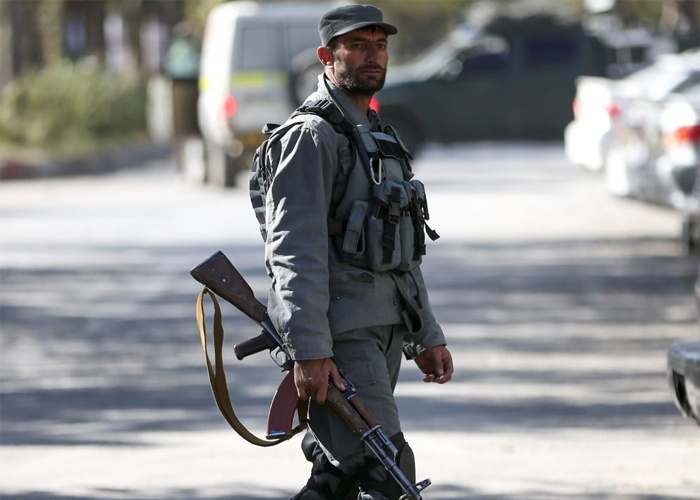Recently, Afghanistan is facing a very challenging phase of its history as the country is confronting a rising wave of insecurity with no clear indications of whether peace can be achieved in near future as the intra-Afghan peace talks remains in preliminary stages. This rising wave of insecurity has influenced almost all parts of the country, but the capital Kabul has been facing its most serious aftermaths, with security incidents happening on regular basis now. The most worrying incidents are the magnetic IED attacks that target prominent government officials, security personnel and journalists. The most recent victim of such an attack was Zia Wadan, the spokesperson for the public protection forces and his two colleagues, whose vehicle was hit by a magnetic IED on Sunday (Jan 10, 2021) morning, while they were traveling to their office. Several such attacks have taken place in the city in the last few weeks and have threatened the city to a large extent. While, in other parts of country, the direct clashes between Taliban and Afghan security forces have threatened the security and peace. The overall security situation has had a negative influence on the society as a whole, and has challenged the law-and-order situation in various ways. One of the ways it has been influencing the situation is rising levels of crimes, particularly, in the capital Kabul .
The World Justice Project ’s report about the Rule of Law in Afghanistan published in June 2020 showed that ‘nearly 20% of Afghans reported that they were the victim of any crime in the last year. When asked about the crime they most recently experienced, more respondents reported that they were the victim of theft (10%) and robbery (3%) than were the victim of vandalism (1%) and burglary (1% )’. The data show an alarmingly high rate of crimes; and there are possibilities that the percentage has increased in the year 2020 because of the rise of insecurity and economic hardships faced by the people because of the COVID-19 pandemic. The report also elaborated that ‘victimization varies by region and by type of crime across Afghanistan, with the largest percentage of respondents reporting that they were most recently the victim of vandalism in the South (2%) and the Southwest (2%), the largest percentage of respondents reporting that they were most recently the victim of theft and burglary in the West (15% and 2%, respectively), and the largest percentage of respondents reporting that they most recently were the victim of robbery in the Southwest (12% )’. While in the capital Kabul the victims of theft were 8%, and that of robbery were 2%. These percentages are worrying, particularly, in the light arrangements and the number of the security personnel stationed in the capital .
As discussed above, the main reason behind rising crimes in Afghanistan is rising insecurity, but the insufficient role of the criminal justice system in the country cannot be ignored. The criminal justice system faces serious challenges, as it is neither able to stop such incidents, nor it has the capacity to bring the culprits to the courts and punish them as per the law. The police force lacks both human resources and financial support to play its role properly. The criminals, mostly supported by different mafia and warlords, can easily get away from the police and challenge their authority even in the capital Kabul. Moreover, the culprits who are caught and brought to justice are not properly trialed, and many among them are able to get away with their crimes. Prevailing corruption among the police ranks and the court officials has further complicated the situation and made it difficult for the system to provide justice to the victims .
The World Justice Project ’s also highlighted that ‘only about half of respondents were confident that the system is accessible to everyone (55%), that it assigns punishments to fit the crime (54%), that victims are able to receive the services and support they need (53%), and that people accused of crimes get a fair trial regardless of who they are (55% )’. So, the report highlights two other important aspects: access to justice and fair trial. First, the people are not able to access the law-enforcement organizations when they face crimes, and because the actual culprits are not brought to justice, there are people who are caught are not provided the opportunities of free trial. The report also reveals that ‘these concerns are also echoed by in-country criminal justice experts, who flagged corruption, lack of prosecutorial independence, inadequate protections, and lack of proper investigation methods among the biggest problems faced by criminal investigative services in Afghanistan ’.
Keeping in mind the facts and figures mentioned above, it is vital that Afghan authorities must understand how insecurity is influencing the crimes in the country, and how the overall justice system can respond to the situation. First, making the insecurity an excuse, the authorities cannot ignore the burgeoning crimes, as it would further strengthen insecurity by fueling the insurgents and terrorists. Second, the authorities need to work on both aspects of the criminal justice system: stopping the crimes from happening and bringing the culprits to the grip of law and punishing them accordingly. However, in doing so, it must ensure that the alleged criminals are provided the opportunity of free trial so that the innocent people must not be charged with crimes, because it would undermine the legitimacy of the state and state institutions .
Home » Opinion » Crimes in the Context of Insecurity
Crimes in the Context of Insecurity
| Sajjad Aasim

